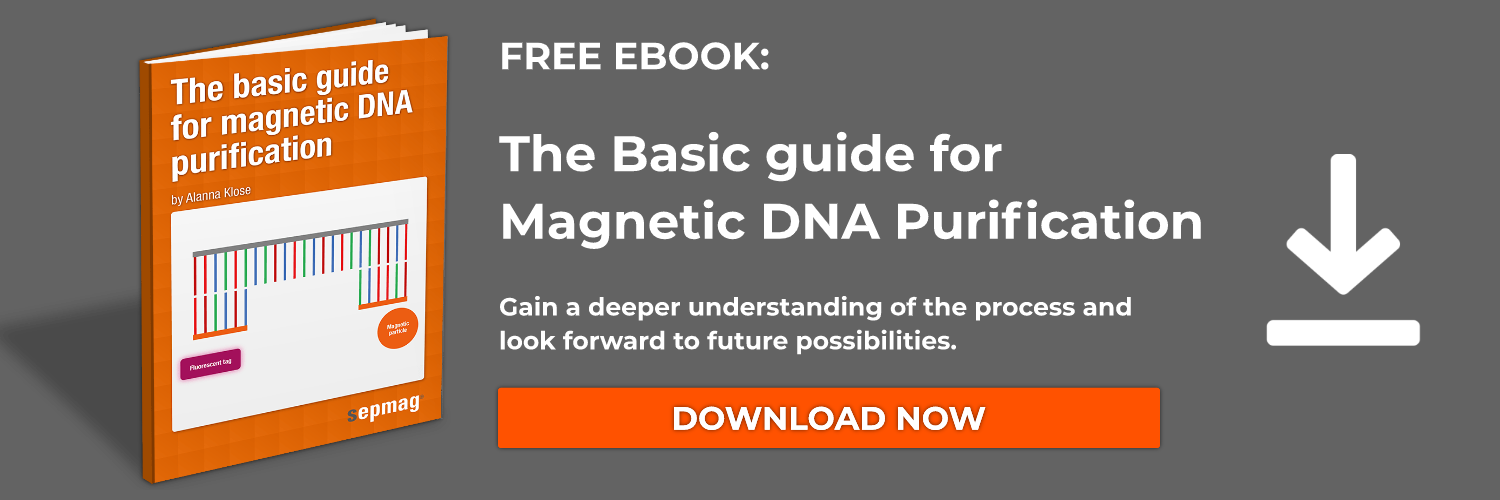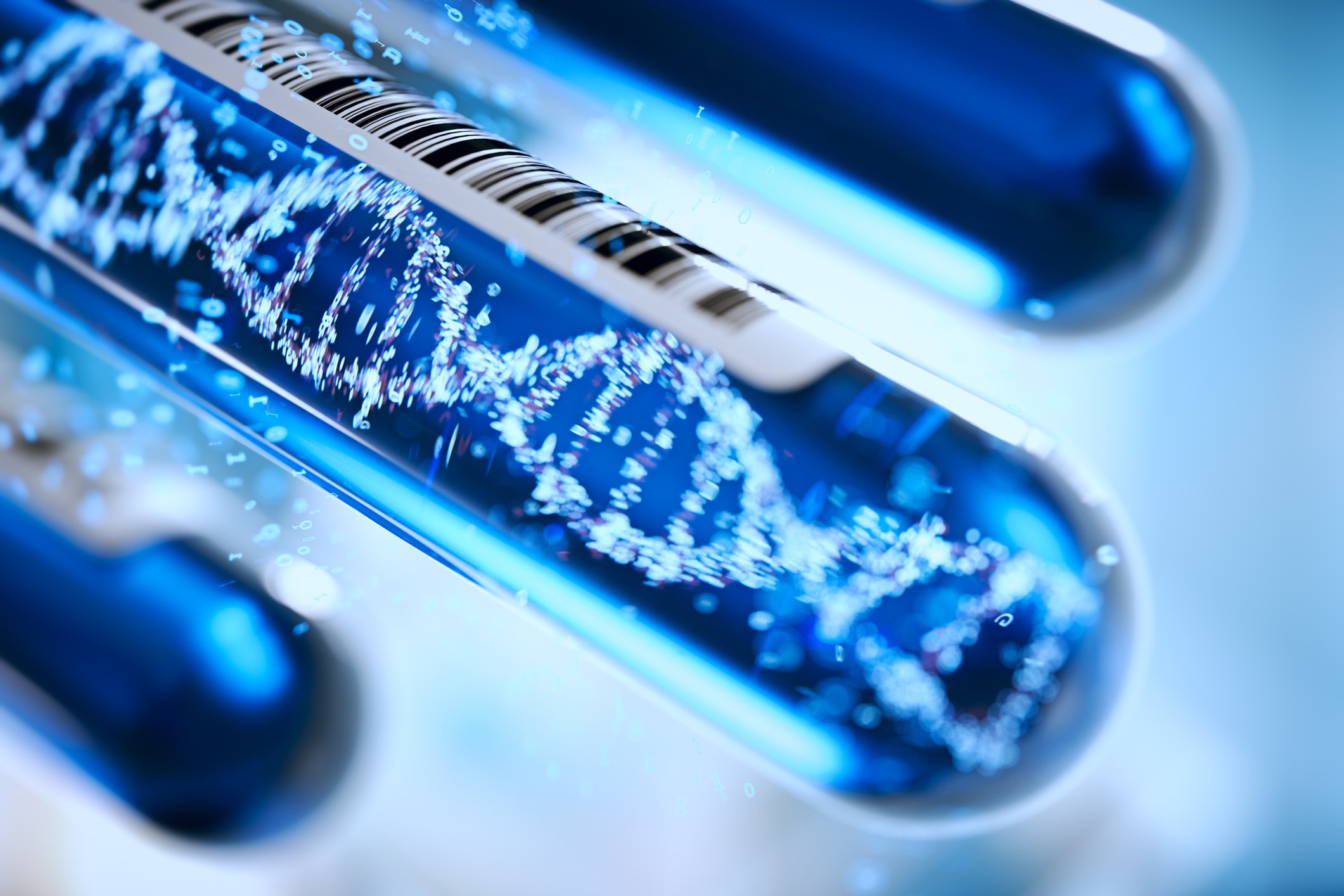There are three general steps to DNA extraction
- celllysis and deactivation of DNAases
- Removal of contaminating molecules: proteins, polysaccharides, salts, other nucleic acids
- Recovery of DNA
Cell lysis
To purify DNA it is absolutely essential to break apart the cell membrane and also the cell wall in plant samples. This releases the DNA into solution. Lysis can be accomplished by mechanically breaking apart the cell with a bead mill or homogenizer, and also with a lysis buffer containing a detergent to deteriorate cell membranes. Though the lysis step is essential to the process it also can be detrimental to the purification process. The lysis step releases the DNA into solution, but it also mixes up all of the other cellular components: proteins, polysaccharides, RNA, DNAases. If DNAases are not deactivated or destroyed they will break down the DNA and there will be nothing left to purify. EDTA can deactivate DNAases, and clean laboratory techniques like wearing gloves and using DEPC-treated water can help prevent contamination by environmental DNAases.
Removal of contaminating molecules and recovery of DNA
The original DNA extraction protocol was called density gradient separation, which used CsCl and substantial centrifugation to separate DNA based on density. Later solution-based DNA extraction protocols took advantage of the different solubility of DNA and proteins in phenol-chloroform solutions. These solutions separate themselves into hydrophilic and hydrophobic layers. The DNA stays in the hydrophilic stage while proteins fall into the hydrophobic layer. In these solutions it is even possible to separate DNA from RNA as they gravitate towards separate layers too. DNA is recovered in this protocol by manually collecting the desired layer with a pipette.
Solid-phase columns, ethanol, and salt buffers were introduced to further purify DNA. These columns are often made of silica beads coated with positively charged diethlaminoethyl groups (DEAE). Since DNA is negatively charged, it electrostatically adsorbs to the anion exchange column in high-salt buffer. Proteins, polysaccharides, and other cellular contaminants flush through the column while DNA is retained until eluted and recovered by a low salt buffer. This is also known as the anion-exchange method of DNA extraction. The advantage of this method is that it results in extremely pure DNA that can be used for transfection, microinjection, sequencing, and gene therapy research. The DNA that results from anion-exchange extraction is as pure as two rounds of CsCl purification, and the entire protocol requires less time. Another advantage is that there is no need for a centrifuge.
The most recent development in DNA extraction protocols is the use of magnetic particles. These particles are coated and functionalized to reversibly bind DNA according to changes in pH and salt concentration. Once bound to the magnetic particle the DNA is extracted by magnetic separation. The DNA is recovered by changing the pH and/or salt concentration of the buffer.
Points to consider when choosing a DNA extraction protocol:
Ease-of-use-
CsCl DNA extraction protocols require multiple washes and spins in a centrifuge which can add up to a lot of time spent purifying a small amount of DNA
-
Solution-based methods require hazardous chemicals like phenol and chloroform
-
Anion-exchange DNA extraction is quick and easy and results in high quality DNA that can be used for rigorous downstream applications.
-
Magnetic separation is easy, can be completed in one tube, doesn't require any centrifugation, and doesn't require hazardous chemicals
Time and throughput: do you want to automate the process?
- Solution-based and Column-based methods are difficult to automate, but magnetic separation has already been automated. These instruments are small enough to fit on the benchtop and have the capacity to isolate 24.
- 96 samples of DNA in a single run. A hidden benefit to automated DNA extraction protocols is the decreased technician handling time. This is good for two reasons; on one hand it frees up time for the technician to work on more complicated procedures, and on the other hand it reduces the opportunity for contamination with DNAses or foreign DNA
Cost
- magnetic separation can be more expensive than traditional methods when evaluating initial cost. However, this method can actually save money and prevent waste by eliminating harsh chemicals and plastic spin tubes as well as saving on total hands-on labor for technical staff.
Related news
- In-vitro diagnostic IVD coatings for magnetic particles
- chemiluminescence vs fluorescence
- Magnetic Nanoparticles





